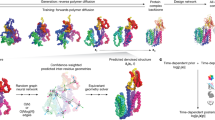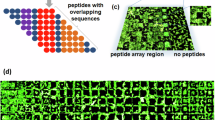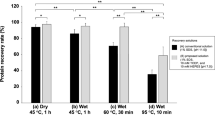Abstract
WE have been concerned with the chromatographic separation of proteins and have developed a simple method of location of proteins on a paper chromatogram or a cellulose column. We have utilized the fact that acid dyes have an affinity for protein fibres but not for cellulose. The developed chromatogram is treated with an acid solution of a suitable dyestuff, preferably warmed for a few minutes, then rinsed in water, when the proteins appear as coloured spots or streaks on a white background. Amino-acids and peptides are not stained.
This is a preview of subscription content, access via your institution
Access options
Subscribe to this journal
Receive 51 print issues and online access
$199.00 per year
only $3.90 per issue
Buy this article
- Purchase on SpringerLink
- Instant access to full article PDF
Prices may be subject to local taxes which are calculated during checkout
Similar content being viewed by others
Author information
Authors and Affiliations
Rights and permissions
About this article
Cite this article
JONES, J., MICHAEL, S. Chromatography of Proteins. Nature 165, 685 (1950). https://doi.org/10.1038/165685a0
Issue date:
DOI: https://doi.org/10.1038/165685a0
This article is cited by
-
Paper Chromatography and Paper Electrorheophoresis of Tuberculoproteins
Nature (1960)
-
Partition chromatography and its use in the plant sciences
The Botanical Review (1959)
-
Vereinfachte Anf�rbung von Protein in Filterpapier
Die Naturwissenschaften (1956)
-
Untersuchungen �ber die Papierchromatographie von menschlichem Serumeiweiss
Klinische Wochenschrift (1954)
-
Paper Chromatography of Proteins
Nature (1951)



